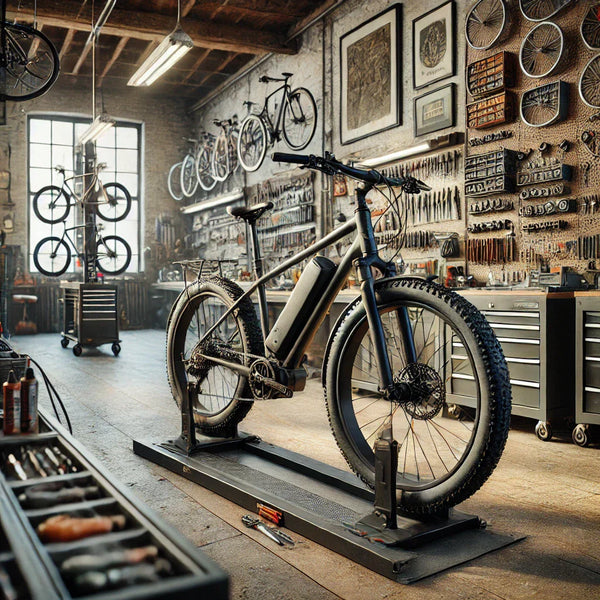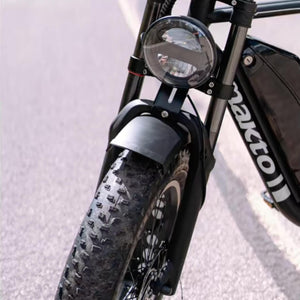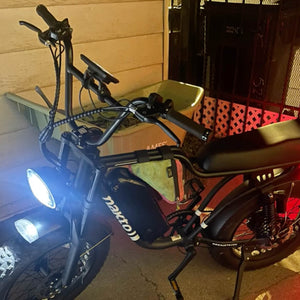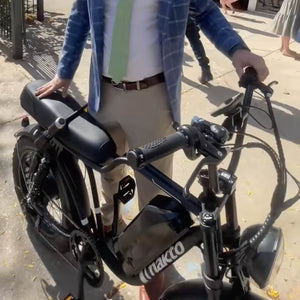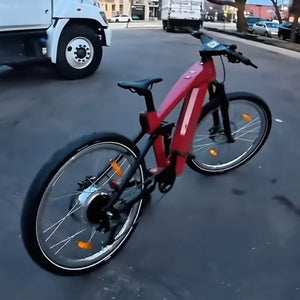How Weather Affects Your E-Bike or Scooter and How to Protect It
Feb 19, 2025
Introduction
Weather conditions can have a major impact on the performance, longevity, and safety of your e-bike or scooter. Extreme heat, cold, rain, and humidity all affect different components, from the battery to the tires. Understanding how to protect your ride in various conditions will help prevent damage and keep it running smoothly year-round.
This guide covers how different weather conditions impact your PEV and the best ways to protect it from damage.
Riding in the Rain: What You Need to Know
Most e-bikes and scooters are designed to handle light rain, but exposure to excessive moisture can cause serious issues.
How Rain Affects Your Ride
- Battery and Electrical System: Water can seep into battery compartments, causing shorts or corrosion.
- Traction and Braking: Wet roads reduce tire grip and increase stopping distance.
- Rust and Corrosion: Metal parts, including chains and bolts, are vulnerable to rust if not dried properly.
How to Protect Your E-Bike or Scooter in the Rain
- Check Your Water Resistance Rating (IP Rating): Higher ratings mean better protection against moisture.
- Use Fender Guards: Keeps water from splashing onto electrical components.
- Dry Your Ride After Use: Wipe down wet areas and store in a dry place.
- Lubricate Your Chain: Rain can wash away lubricants, leading to faster wear.
When to Avoid Riding
Heavy rain, deep puddles, and flooded roads pose a high risk for electrical damage and loss of control. If conditions look dangerous, it's best to wait for better weather.
Hot Weather and Battery Performance
Excessive heat is one of the biggest threats to e-bike and scooter batteries. Prolonged exposure to high temperatures can shorten battery life and reduce efficiency.
How Heat Affects Your Ride
- Battery Overheating: High temperatures cause lithium-ion batteries to degrade faster.
- Tire Pressure Fluctuations: Heat expands air inside the tires, increasing the risk of blowouts.
- Component Wear: Prolonged sun exposure can cause plastic and rubber parts to weaken and crack.
How to Protect Your Ride in the Heat
- Avoid Direct Sunlight: Store in the shade or indoors when possible.
- Charge in a Cool Place: Never charge the battery in extreme heat.
- Check Tire Pressure More Frequently: Overinflated tires may need slight adjustments.
When to Avoid Riding
If temperatures exceed 100°F, it’s best to limit your ride duration to prevent overheating.
Cold Weather and Battery Drain
Cold temperatures cause battery performance to drop, reducing the range and power output of your PEV.
How Cold Affects Your Ride
- Battery Efficiency Drops: Lithium-ion batteries lose power faster in freezing conditions.
- Tires Harden: Rubber stiffens in the cold, leading to reduced grip.
- Increased Wear on Mechanical Components: Lubricants thicken, making gears and brakes less responsive.
How to Protect Your Ride in the Cold
- Store the Battery Indoors: Keep it at room temperature before use.
- Preheat the Battery (If Possible): Some PEVs have battery warming features—check your model.
- Use Winter-Grade Lubricants: Helps keep moving parts from freezing up.
- Lower Your Tire Pressure Slightly: Improves traction on icy or slippery surfaces.
When to Avoid Riding
Extreme cold, black ice, and heavy snowfall make riding dangerous. If temperatures fall below 20°F, consider alternative transportation.
Windy Conditions and Stability Issues
Strong winds can make riding an e-bike or scooter challenging, especially at higher speeds.
How Wind Affects Your Ride
- Reduced Control: Crosswinds can push your ride off balance.
- Increased Energy Use: Riding against strong headwinds drains the battery faster.
- Flying Debris Hazards: Dust, leaves, and other airborne objects can obstruct vision and cause accidents.
How to Ride Safely in Windy Conditions
- Lower Your Speed: Helps maintain balance and control.
- Keep a Firm Grip on Handlebars: Prevents sudden swerving.
- Wear Protective Glasses: Shields eyes from dust and debris.
When to Avoid Riding
If wind speeds exceed 30 mph, it may be unsafe to ride due to stability risks.
Humidity and Long-Term Storage Considerations
High humidity increases the risk of rust and corrosion, particularly in electrical components and metal parts.
How Humidity Affects Your Ride
- Corrosion on Metal Parts: Chains, bolts, and exposed metal areas are more likely to rust.
- Electrical Malfunctions: Moisture buildup can lead to connection failures.
- Battery Performance Issues: Excess humidity may impact charging efficiency.
How to Prevent Humidity Damage
- Store Indoors in a Climate-Controlled Area: A dry garage or storage room is best.
- Use a Protective Cover: Shields your ride from excessive moisture exposure.
- Apply Anti-Rust Treatments: Lubricate metal components to prevent rust.
When to Avoid Riding
If humidity is combined with heavy rain or extreme heat, it’s best to store your ride in a dry, cool environment.
Final Thoughts
Weather conditions can significantly impact the performance, safety, and longevity of your e-bike or scooter. Rain, heat, cold, wind, and humidity all pose unique challenges, but with the right precautions, you can keep your ride protected year-round.
Regular maintenance and proper storage ensure that your PEV stays reliable in all conditions. If you need a professional inspection or weatherproofing tips, book a service today to keep your ride in top shape.
